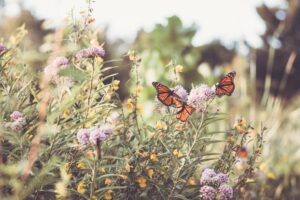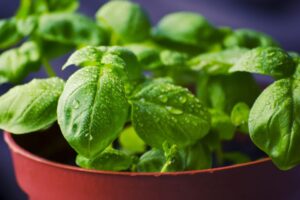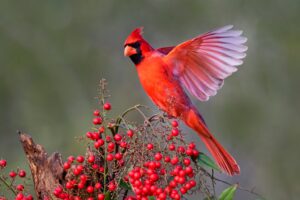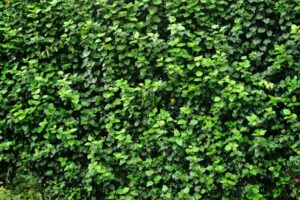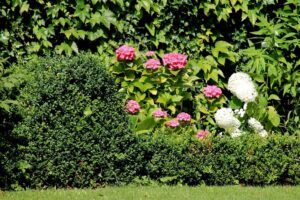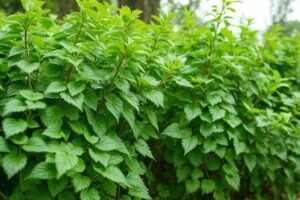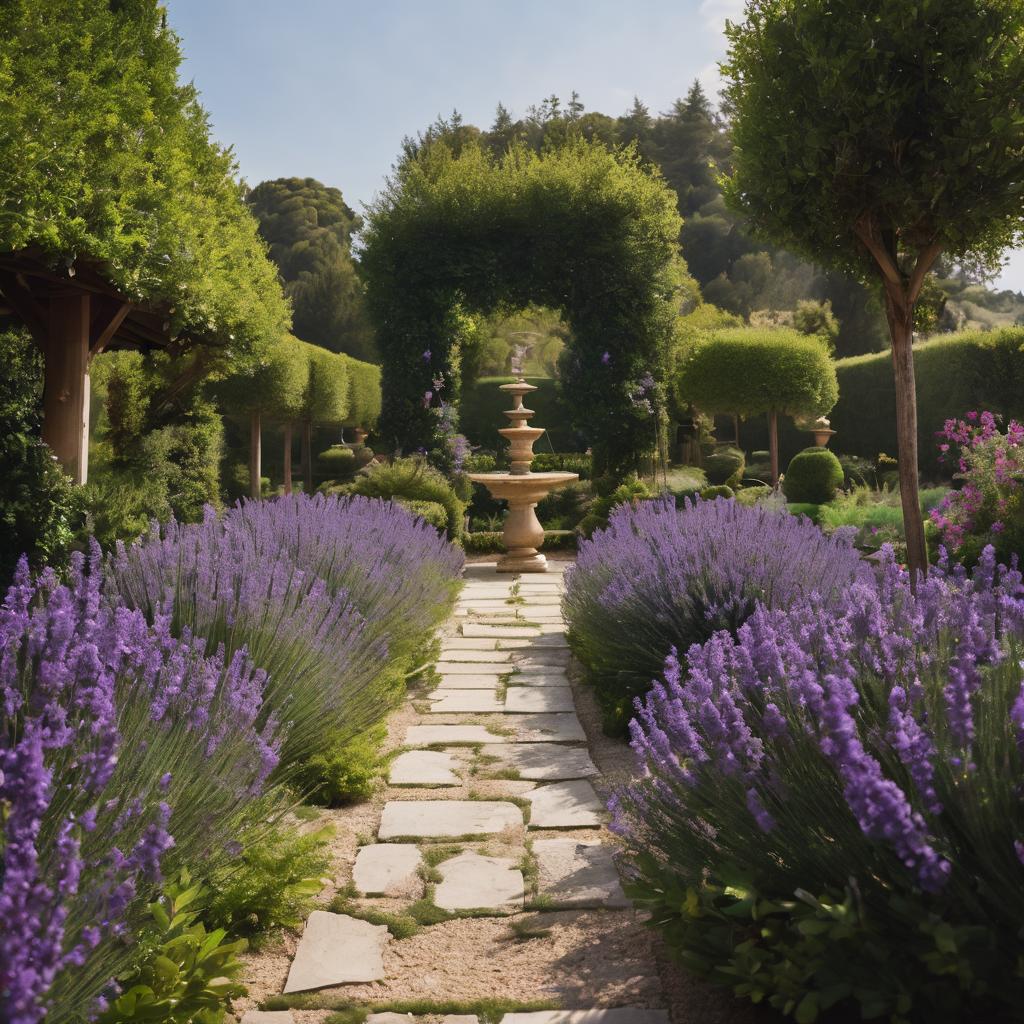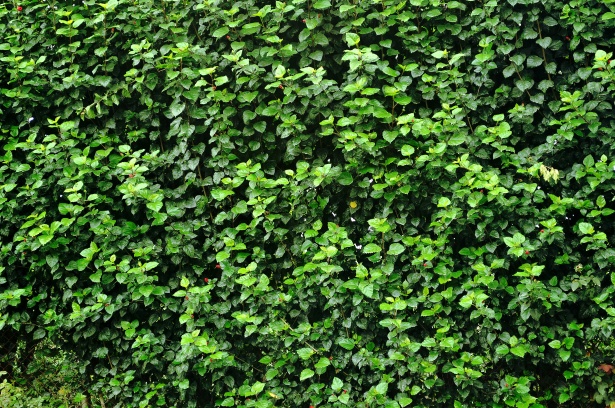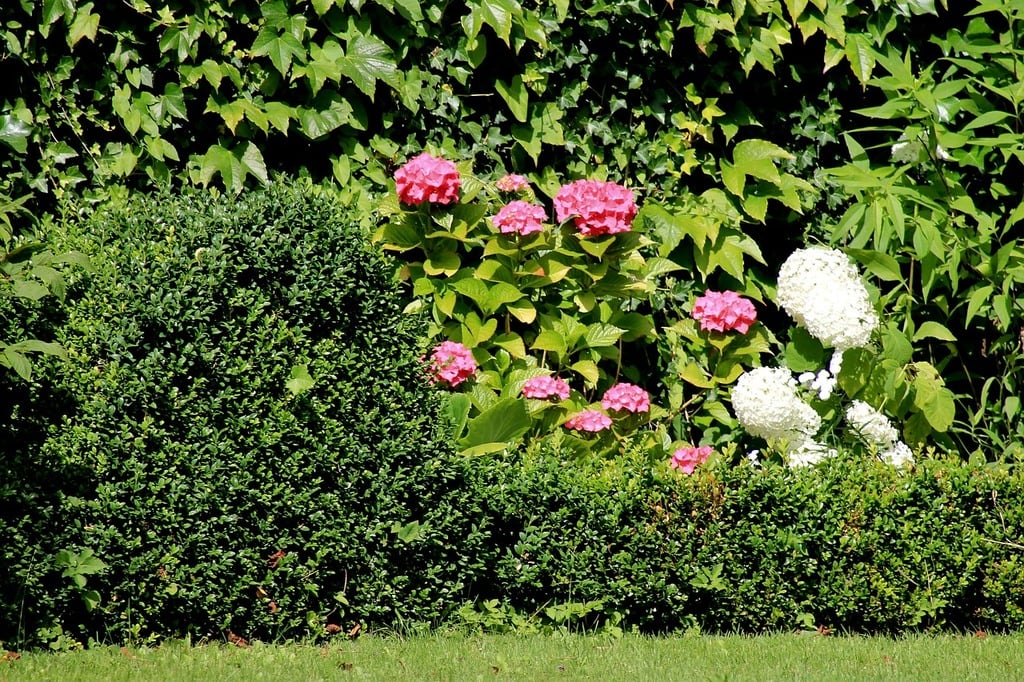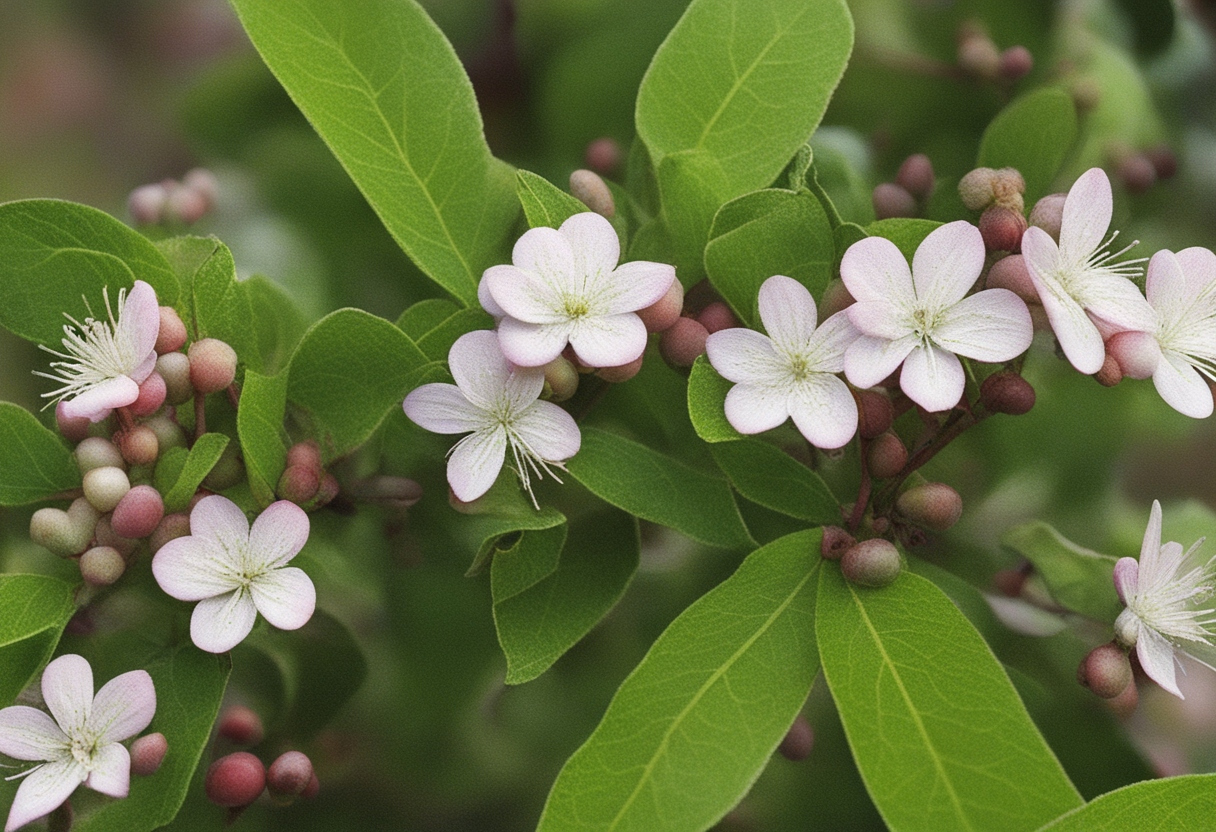Understanding Native Plants: An Overview of Their Importance in Your Region
Native plants play a crucial role in maintaining the ecological balance and biodiversity of your region. These plants are indigenous to the area and have developed a unique set of adaptations to thrive in the local climate, soil type, and overall environment. By planting and preserving native plants, you can help preserve the natural heritage of your region and provide a habitat for local wildlife.
One of the key advantages of native plants is their ability to withstand the local weather conditions, including temperature fluctuations, rainfall patterns, and soil composition. Since these plants have evolved over time to cope with these specific conditions, they are more resilient and require less maintenance compared to non-native plants. This means that you can create a sustainable and low-maintenance landscape by incorporating more native species. Additionally, native plants have adapted to attract and support a wide range of pollinators, such as bees, butterflies, and birds, which play a vital role in the overall health of the ecosystem.
• Native plants maintain the ecological balance and biodiversity of your region.
• They have unique adaptations to thrive in the local climate, soil type, and environment.
• Planting native plants helps preserve the natural heritage of your region.
• Native plants provide a habitat for local wildlife.
• They can withstand local weather conditions, including temperature fluctuations and rainfall patterns.
• Native plants require less maintenance compared to non-native plants.
• Incorporating more native species creates a sustainable and low-maintenance landscape.
• Native plants attract and support pollinators such as bees, butterflies, and birds.
Factors to Consider When Choosing Native Shrubs for Your Garden
When choosing native shrubs for your garden, there are several important factors to consider. First and foremost, it is crucial to familiarize yourself with the specific growing conditions of your region. Native shrubs are naturally adapted to the local climate, soil type, and precipitation patterns, making them a hardier and more resilient choice for your garden. By selecting shrubs that are well-suited to your region, you can reduce the need for excessive watering, fertilizers, and pesticides, creating a more sustainable and environmentally-friendly landscape.
Another key factor to consider is the purpose or function of the shrubs in your garden. Are you looking for shrubs that will provide privacy and create a natural barrier? Or do you want to attract wildlife and enhance biodiversity? By defining the purpose of the shrubs, you can narrow down your options and choose varieties that will best meet your needs. Additionally, consider the size and growth habit of the shrubs, ensuring they will fit well in your garden and not overshadow or overwhelm other plants. Taking these factors into account will help you make informed decisions and create a harmonious and well-designed garden.
• Familiarize yourself with the specific growing conditions of your region
• Select shrubs that are well-suited to your region for a hardier and more resilient garden
• Reduce the need for excessive watering, fertilizers, and pesticides by choosing native shrubs
• Consider the purpose or function of the shrubs in your garden
• Determine if you want privacy, a natural barrier, or to attract wildlife and enhance biodiversity
• Define the size and growth habit of the shrubs to ensure they fit well in your garden
• Avoid overshadowing or overwhelming other plants in your garden
• Make informed decisions to create a harmonious and well-designed garden
Exploring the Benefits of Native Shrubs: Ecological and Environmental Impact
Native shrubs play a crucial role in supporting ecological and environmental health in our regions. These plants have evolved and adapted to specific local conditions, making them well-suited to thrive in their natural habitats. By choosing native shrubs for our gardens and landscapes, we can contribute to the preservation of biodiversity and the overall balance of ecosystems.
One of the key benefits of native shrubs is their ability to provide habitat and food sources for local wildlife. These plants offer shelter and nesting sites for birds, butterflies, bees, and other beneficial insects. They also produce fruits, berries, and seeds that serve as vital food sources for various animal species. By incorporating native shrubs into our gardens, we can create a welcoming habitat for the local wildlife and promote a healthy and diverse ecosystem. Additionally, native shrubs require minimal maintenance, reducing the need for pesticides and excessive watering, which positively impacts the environment by conserving water and minimizing chemical use.
• Native shrubs have evolved to thrive in their natural habitats, making them well-suited for local conditions
• Choosing native shrubs supports biodiversity and the overall balance of ecosystems
• Native shrubs provide habitat and food sources for local wildlife such as birds, butterflies, bees, and beneficial insects
• These plants offer shelter and nesting sites for various animal species
• Native shrubs produce fruits, berries, and seeds that serve as vital food sources for animals
• Incorporating native shrubs into gardens creates a welcoming habitat for local wildlife
• Native shrubs require minimal maintenance, reducing the need for pesticides
• Minimal maintenance also reduces excessive watering needs
• Using native shrubs conserves water resources
• By using native shrubs there is a reduction in chemical use which positively impacts the environment.
Creating a Habitat with Native Shrubs: Supporting Local Wildlife and Biodiversity
Native shrubs play a crucial role in supporting local wildlife and biodiversity by creating a natural habitat that can sustain a variety of species. These shrubs provide essential food, shelter, and nesting opportunities for birds, butterflies, bees, and other pollinators. The diverse range of native shrubs also attracts different insects and small mammals, creating a vibrant ecosystem within your own garden.
By planting native shrubs, you are not only supporting local wildlife but also promoting biodiversity in your region. Native plants have co-evolved with native animals over thousands of years, forming intricate relationships that are vital for the ecological balance. When you introduce native shrubs into your landscape, you are contributing to the preservation of these symbiotic interactions and ensuring a healthier and more resilient ecosystem for both wildlife and humans alike. Embracing diverse native shrubs in your garden can make a significant impact on the overall biodiversity of your area and help create a sustainable and thriving environment.
• Native shrubs provide essential food, shelter, and nesting opportunities for birds, butterflies, bees, and other pollinators.
• The diverse range of native shrubs attracts different insects and small mammals, creating a vibrant ecosystem within your own garden.
• Planting native shrubs supports local wildlife and promotes biodiversity in your region.
• Native plants have co-evolved with native animals over thousands of years, forming intricate relationships that are vital for the ecological balance.
• Introducing native shrubs into your landscape contributes to the preservation of symbiotic interactions between plants and animals.
• Embracing diverse native shrubs in your garden can make a significant impact on overall biodiversity.
• Creating a habitat with native shrubs helps create a sustainable and thriving environment for both wildlife and humans.
Native Shrubs for Sun-Loving Gardens: Thriving in Bright and Sunny Locations
Sun-loving gardens can be a vibrant and beautiful addition to any landscape. When choosing native shrubs for these bright and sunny locations, there are several factors to consider. One important factor is the amount of sunlight the shrub requires. Some native shrubs thrive in full sun, while others prefer partial shade. It’s important to select shrubs that will be able to withstand the intense heat and direct sunlight that comes with a sun-loving garden.
In addition to considering sunlight requirements, it’s also important to think about the soil conditions in your garden. Native shrubs that thrive in sunny locations typically prefer well-draining soil. Sandy or loamy soils are often a good match for these shrubs, as they allow water to flow through easily and prevent root rot. Before planting, it’s a good idea to amend the soil with organic matter to improve drainage and provide the necessary nutrients for healthy growth. By selecting native shrubs that are well-suited to sunny gardens and ensuring they have the proper soil conditions, you can create a thriving and visually appealing landscape that will bring joy for years to come.
• Some native shrubs thrive in full sun, while others prefer partial shade
• It’s important to select shrubs that can withstand intense heat and direct sunlight
• Native shrubs for sunny gardens typically prefer well-draining soil
• Sandy or loamy soils are often a good match for these shrubs
• Amending the soil with organic matter improves drainage and provides necessary nutrients
Shade-Loving Native Shrubs: Enhancing Cool and Shaded Areas of Your Landscape
When it comes to enhancing the cool and shaded areas of your landscape, shade-loving native shrubs are the perfect choice. These plants have evolved to thrive in lower light conditions and are well-equipped to handle the challenges of limited sun exposure. By incorporating shade-loving native shrubs into your garden, you can create a lush and inviting oasis in those areas where direct sunlight is scarce.
One of the key benefits of shade-loving native shrubs is their ability to enhance the aesthetics of cool and shaded areas. With their vibrant foliage and beautiful blooms, these plants can add texture, color, and visual interest to any shady corner of your landscape. Whether you want to create a serene and peaceful retreat or transform a dark and gloomy spot into a vibrant garden, shade-loving native shrubs can play a crucial role in achieving your desired look. Moreover, their adaptability to low light conditions ensures that they will continue to thrive and bring beauty to your shaded areas throughout the growing season.
• Shade-loving native shrubs are well-equipped to handle limited sun exposure
• These plants have evolved to thrive in lower light conditions
• They can create a lush and inviting oasis in areas with scarce direct sunlight
• Shade-loving native shrubs enhance the aesthetics of cool and shaded areas
• Their vibrant foliage and beautiful blooms add texture, color, and visual interest
• They can transform dark and gloomy spots into vibrant gardens
• These shrubs play a crucial role in achieving desired looks, whether serene or vibrant
• Adaptability to low light conditions ensures they will continue to thrive throughout the growing season
Drought-Tolerant Native Shrubs: Adapting to Water-Scarcity in Your Region
Native shrubs that are drought-tolerant play a crucial role in adapting to water scarcity in their respective regions. These plants have evolved to thrive in environments with limited water availability, making them an ideal choice for landscapes that experience dry spells or have water restrictions. Drought-tolerant native shrubs are able to withstand prolonged periods of drought without the need for excessive watering, thus reducing the demand for irrigation and conserving water resources. By incorporating these resilient plants into your garden, you can create a sustainable and eco-friendly landscape that is better equipped to deal with water scarcity challenges.
In addition to their ability to adapt to water scarcity, drought-tolerant native shrubs offer a variety of other benefits. These plants often have deep root systems, allowing them to access moisture deep within the soil. This not only helps them survive during dry periods but also helps prevent erosion and improve soil structure. Drought-tolerant native shrubs can also provide habitat and food sources for local wildlife, attracting birds, butterflies, and other beneficial insects to your garden. Furthermore, these plants tend to be low-maintenance, requiring less water, fertilizers, and pesticides, which not only saves time and effort but also reduces the overall environmental impact of your garden.
• Drought-tolerant native shrubs have evolved to thrive in environments with limited water availability
• They can withstand prolonged periods of drought without excessive watering
• Incorporating these plants into your garden reduces the demand for irrigation and conserves water resources
• Deep root systems allow these shrubs to access moisture deep within the soil, preventing erosion and improving soil structure
• Drought-tolerant native shrubs provide habitat and food sources for local wildlife, attracting birds, butterflies, and beneficial insects
• These plants are low-maintenance, requiring less water, fertilizers, and pesticides
• Using drought-tolerant native shrubs saves time and effort in garden maintenance
• By choosing these plants, you reduce the overall environmental impact of your garden.
Native Shrubs for Wet and Moist Areas: Flourishing in Humid Conditions
Native shrubs that thrive in wet and moist areas are an excellent choice for gardeners living in regions with high humidity. These shrubs have adapted to the conditions of consistent moisture and can withstand the challenges that come with it. One such example is the silky dogwood (Cornus amomum), which thrives in wet meadows and along stream banks. Its attractive white flowers and vibrant red berries make it a delight to behold, while its ability to prevent soil erosion makes it an asset to any garden in moist areas.
Another formidable shrub that flourishes in moist conditions is the buttonbush (Cephalanthus occidentalis). Its round, white flowers create a stunning visual display and provide a valuable source of nectar for pollinators. Additionally, this shrub is known for its ability to attract various bird species, emphasizing its significance in enhancing biodiversity. Moreover, the buttonbush’s tolerance to wet soils and its ability to purify water by removing pollutants make it an excellent ecological choice for gardens in wet and moist areas.
By selecting native shrubs that excel in wet and moist conditions, gardeners can create a harmonious and visually striking landscape. These shrubs not only offer aesthetic value with their beautiful flowers and foliage but also play an essential role in preserving the delicate balance of local ecosystems. Additionally, their adaptability to high levels of moisture makes them a low-maintenance option for gardeners who desire effortless beauty in their gardens. Consider incorporating native shrubs that thrive in wet and moist areas to create a vibrant and sustainable landscape that benefits both humans and the environment.
• Silky dogwood (Cornus amomum) is a native shrub that thrives in wet meadows and along stream banks.
• It has attractive white flowers and vibrant red berries, adding beauty to any garden in moist areas.
• Silky dogwood also helps prevent soil erosion, making it an asset for gardens with consistent moisture.
• Buttonbush (Cephalanthus occidentalis) is another formidable shrub that flourishes in moist conditions.
• Its round, white flowers create a stunning visual display and provide nectar for pollinators.
• Buttonbush attracts various bird species, enhancing biodiversity in the garden.
• Native shrubs that excel in wet and moist conditions create a harmonious and visually striking landscape.
• They offer aesthetic value with their beautiful flowers and foliage while preserving local ecosystems’ delicate balance.
• These shrubs are low-maintenance options due to their adaptability to high levels of moisture.
By incorporating native shrubs that thrive in wet and moist areas, gardeners can create vibrant and sustainable landscapes. These plants not only add beauty but also contribute to the overall health of the environment.
Low-Maintenance Native Shrubs: Effortless Beauties for Busy Gardeners
Low-maintenance native shrubs are a perfect choice for busy gardeners who want a beautiful landscape without the hassle of constant upkeep. These effortless beauties require minimal pruning, watering, and fertilizing, making them a great option for those with limited time or gardening experience. With their resilience and ability to thrive in various environments, low-maintenance native shrubs can be a stunning addition to any garden.
One advantage of low-maintenance native shrubs is their adaptability to different soil and climate conditions. These plants are well-suited to the local environment, making them more resistant to pests, diseases, and extreme weather. Unlike non-native species, which often require special care and attention, native shrubs have evolved over time to survive and thrive on their own. This means less time and effort spent on maintenance tasks, allowing busy gardeners to enjoy their outdoor space without constant worry. Whether you have a small urban garden or a large rural landscape, low-maintenance native shrubs can provide beauty and tranquility without demanding too much of your time and energy.
• Low-maintenance native shrubs require minimal pruning, watering, and fertilizing
• They are well-adapted to local soil and climate conditions
• Native shrubs are more resistant to pests, diseases, and extreme weather compared to non-native species
• These plants have evolved over time to survive and thrive on their own
• Busy gardeners can enjoy their outdoor space without constant worry about maintenance tasks
• Whether you have a small urban garden or a large rural landscape, low-maintenance native shrubs can provide beauty and tranquility
Native Shrubs for All Seasons: Creating Year-Round Interest in Your Landscape
Native shrubs are an excellent choice for homeowners who want a landscape that remains visually appealing throughout the year. With their ability to withstand changing weather conditions, these plants offer a variety of textures, colors, and forms that enhance the beauty of any garden. Whether you prefer vibrant blooms in the spring, lush foliage in the summer, or striking berries in the fall and winter, there are native shrubs available to meet your landscaping needs.
One native shrub renowned for its year-round interest is the winterberry (Ilex verticillata). This deciduous shrub boasts clusters of bright red berries that persist long into the winter, creating a stunning contrast against its bare branches and the snowy landscape. Additionally, the winterberry provides essential food and shelter for birds during the colder months, making it a valuable addition to any wildlife-friendly garden. Its ability to thrive in wet soil also makes it an ideal choice for areas prone to occasional flooding. Whether planted as a focal point in a garden bed or used as a natural privacy screen, the winterberry ensures that your landscape remains visually appealing even during the dreary winter months.
• Winterberry (Ilex verticillata) is a native shrub that offers year-round interest in the landscape.
• It features clusters of bright red berries that last throughout the winter, adding a pop of color to the snowy scenery.
• The winterberry also serves as a valuable food source and shelter for birds during the colder months.
• This shrub can thrive in wet soil conditions, making it suitable for areas prone to occasional flooding.
• Whether used as a focal point or privacy screen, the winterberry adds visual appeal to any garden bed.


